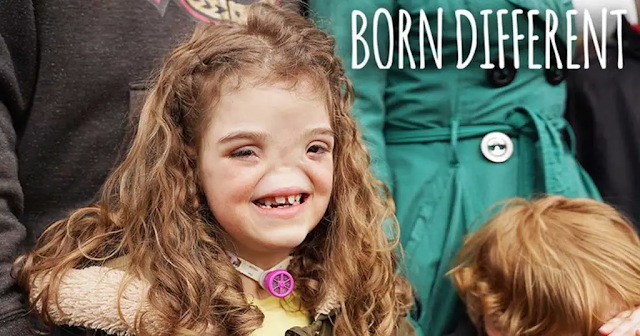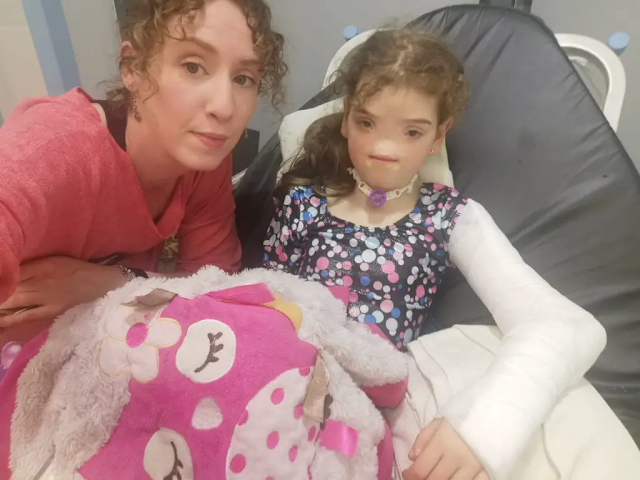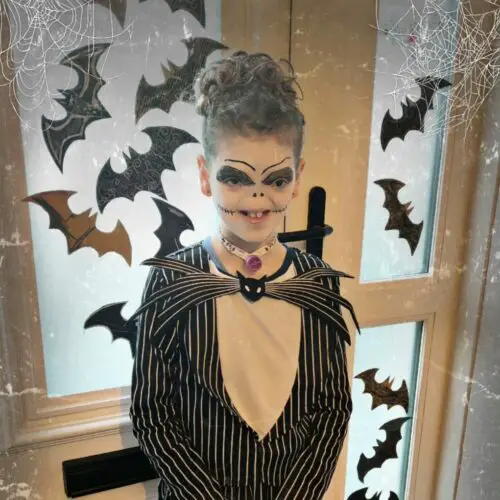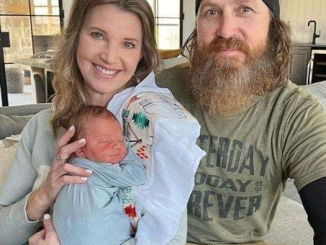The human body’s ability to adapt and overcome challenges is truly remarkable. Tessa Evans, born on Valentine’s Day in 2013, exemplifies this resilience. Diagnosed with Bosma arhinia microphthalmia syndrome—a rare genetic condition—Tessa has not only become a symbol of medical advancement but also a beacon of hope and inspiration.
Understanding a Rare Genetic Condition

Bosma arhinia microphthalmia syndrome affects the development of the nose, eyes, and puberty, and can also influence brain structure. With fewer than 100 documented cases worldwide, the condition is exceptionally rare. First identified in Vietnam in 1981, evidence suggests its existence may date back even further. Tessa Evans is one of the few individuals living with this condition, representing a unique story of courage and progress.
A Trailblazing Journey

Tessa’s parents, Grainne and Nathan Evans from Maghera, Northern Ireland, were unprepared for the diagnosis, as no abnormalities were detected during pregnancy. Despite the shock, the couple embraced their daughter’s uniqueness and embarked on a mission to enhance her quality of life through groundbreaking medical treatments.
Groundbreaking Treatments

At just two weeks old, Tessa underwent her first surgery to receive a tracheostomy tube, enabling her to breathe and eat more easily. By the age of two, she made history as the youngest patient to receive a cosmetic nasal implant. Utilizing advanced technologies such as 3D printing and medical tattooing, doctors are working to create a permanent nasal structure for Tessa as she grows. These innovations are designed to reduce the need for future surgeries and provide her with a more natural profile.
Challenges Beyond Appearance
Living without a sense of smell presents unique safety challenges for Tessa. Without this critical sensory warning system, she is more vulnerable to dangers like fires or spoiled food. Her parents remain vigilant, ensuring her safety and emphasizing the importance of raising awareness about her condition.
Inspiring Change and Progress

Tessa’s courage and her family’s determination have sparked hope for others facing similar diagnoses. Her groundbreaking treatments have inspired another child in the UK to pursue similar procedures. Described as “charming” and “fearlessly courageous,” Tessa continues to challenge perceptions and drive innovation in medical science. Her family’s Facebook page, Tessa; Born Extraordinary, documents her incredible journey, inspiring nearly 10,000 followers.
A Legacy of Resilience
Tessa Evans’ story is one of love, resilience, and medical breakthroughs. Despite the extraordinary challenges posed by her rare condition, she exemplifies what is possible with determination and the support of a dedicated family. Tessa’s journey is not only reshaping lives but also redefining the boundaries of medical science.
Please SHARE this story to inspire others and spread awareness about this extraordinary journey.
20 families had previously rejected an ‘unusual’ girl before a single man adopted her
The story of this cute family of two started when little Alba, who was just 13 days old back then, was rejected by 20 adoptive families.
The decision made by all these people not to embrace the special little girl turned lucky for the 41-year-old Italian Luca Trapanese.
When he filled in the adoption papers, Luca didn’t really believe the social services would allow him to become the legal father of Alba as in the country where he is from it is not common for single, homosexual man to be granted custody.
But, as all those families didn’t want to adopt a child with Down Syndrome, and Luca was more than happy to have such child in his life, he took Alba in and became her legal daddy.
The moment he welcomed sweet Alba into his life, he became the happiest person on Earth. Speaking of his daughter and his case, he said it was very special because it “destroys stereotypes about fatherhood, religion and family.”
The journey of these father and daughter started back in 2017 and they are stealing the hearts of many ever since.
Luka has a heart of gold. He has been part of many social service programs throughout the years and volunteered at various organizations who help people with special needs find their place in the society. Among the rest, he was part of the foundation “A Ruota Libera” which provided assistance for children with Down Syndrome.
This was one of the reasons why Luca wanted to adopt a child with Down Syndrom despite not having a partner.
20 families had previously rejected an ‘unusual’ girl before a single man adopted her
The story of this cute family of two started when little Alba, who was just 13 days old back then, was rejected by 20 adoptive families.
The decision made by all these people not to embrace the special little girl turned lucky for the 41-year-old Italian Luca Trapanese.
When he filled in the adoption papers, Luca didn’t really believe the social services would allow him to become the legal father of Alba as in the country where he is from it is not common for single, homosexual man to be granted custody.
But, as all those families didn’t want to adopt a child with Down Syndrome, and Luca was more than happy to have such child in his life, he took Alba in and became her legal daddy.
The moment he welcomed sweet Alba into his life, he became the happiest person on Earth. Speaking of his daughter and his case, he said it was very special because it “destroys stereotypes about fatherhood, religion and family.”
The journey of these father and daughter started back in 2017 and they are stealing the hearts of many ever since.
Luka has a heart of gold. He has been part of many social service programs throughout the years and volunteered at various organizations who help people with special needs find their place in the society. Among the rest, he was part of the foundation “A Ruota Libera” which provided assistance for children with Down Syndrome.
This was one of the reasons why Luca wanted to adopt a child with Down Syndrom despite not having a partner.
YOU
Finalizing the adoption was a difficult process as adoption agencies prefer “traditional” families over the non-conventional ones.
“For me, a disabled child is not a second choice solution, but a conscious choice with respect to my vocation and my abilities,” Luca said.
Alba is a happy child with a vibrant personality. She loves being around people and enjoys playing and dancing.
We are so glad that the perception of people with Down Syndrome is changing and they are considered valuable part of the society.
As for Luca and Alba, we wish them all the best that life can bring!



Leave a Reply